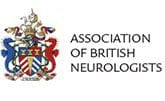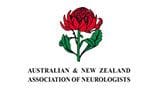Epileptic seizures: The secret life of the brain
Seizures are common. In fact, they are more common than most people would think. The probability that someone will suffer at least one seizure during his/her lifetime is as high as 10%; if no seizures occur in childhood then the chance of seizure(s) in adulthood is around 5%.
What is a seizure?
According to the International League Against Epilepsy (the body that represents doctors around the world dealing with epilepsy), "an epileptic seizure is a transient occurrence of signs and/or symptoms due to abnormal excessive or synchronous neuronal activity in the brain". The word "seizure" comes from the word seize that itself originates from the Latin sacire, meaning "to take possession of" or "take by force". There are different types of seizures depending on which part of the brain is affected. Some seizures cause the body to stiffen, jerk or shake (i.e., having a convulsion), while others cause loss of awareness, unusual sensations or strange behaviour. In most people seizures start abruptly, last few seconds or minutes and stop on their own.
the 2014 definition of epilepsy, a perspective for patients and caregivers
How do seizures occur?
The brain is made up of billions of nerve cells called neurons. Neurons carry electrical impulses and communicate with each other and other parts of the body by sending chemical signals via tiny gaps between nerve endings called synapses. Different parts of the brain specialize in different functions (like movement, vision, sensations, feelings, speech, etc) but manage to communicate effectively and produce a complex output that forms the basis of consciousness and behaviour. Understanding Epilepsy
Similar to a car, where there is an accelerator and a brake, the function of neurons is driven by a combination of excitation and inhibition of electrical signals. It is believed that seizures occur when there is too much excitation, causing groups of neurons to fire excessively together in an uncontrollable manner. The output of this electrical activity in the brain translates into the seizure and can be seen with an electroencephalogram (EEG). The EEG records brain electrical signals on the scalp in real time and can provide important clues about the function of the brain and the location of the seizure.
What are the different types of seizures?
Based on where they start in the brain, seizures are divided into two major groups:
- Focal-onset seizures (previously called "partial seizures") -the seizure starts in one area (part) of the brain; it may eventually spread over both sides of the brain and present as tonic-clonic or convulsive seizures (previously called "secondarily generalized seizures", now called focal to bilateral tonic clonic seizures).
-
Generalized-onset (previously called "generalized seizures")-the seizure affects both sides of the brain (hemispheres) from the onset
Quite often doctors cannot be sure if a seizure is focal or generalized from onset. Therefore, there is a third category: - Unknown onset -in this case the seizure type is known but it is not clear if the onset is focal or generalized; the most typical example is a generalised tonic clonic (convulsive) seizure where one cannot tell if the seizure is generalised from onset or starts as a focal discharge that spreads over both hemispheres and becomes generalised.
All seizures can be described as those that cause abnormal movements or not (i.e., motor vs nonmotor seizures). In addition, focal seizures are subdivided into those that impair awareness or not (i.e., aware vs impaired awareness seizures). Focal aware seizures are sometimes described as "auras"; they can evolve to a focal impaired awareness or a focal to bilateral tonic clonic seizure. Epilepsy Auras
Sometimes, there is not enough information about what exactly happens during a seizure in order to place them in one of the other categories; these seizures are then called unclassified.
Many people still refer to convulsive or tonic-clonic seizures as "grand mal" seizures and to seizures with activity arrest as "absence" seizures. The term "grand mal" is now obsolete and not used anymore by neurologists, while "absence" (aka "petit mal", another obsolete term) refers only to a very specific seizure type that almost exclusively occurs in children and adolescents, it is diagnosed with the help of EEG, and it should not be used to describe blank spells of any cause. Absence Seizures
What are the main causes of seizures?
- Spontaneously -called epileptic (or unprovoked) seizures
- During an acute insult or illness -there are two types: acute symptomatic and provoked seizures
Seizures that happen during an acute health problem caused by chemical imbalance in the brain are called "provoked", as it is accepted that the seizure is a reaction to a transient disturbance. Examples include seizures in the context of alcohol withdrawal or toxicity, low sodium or sugar levels in the blood, or medication side effects. Provoked seizures are not expected to happen in the absence of the acute problem. Seizures that happen in relation to acute brain damage, like stroke or head trauma, are called acute symptomatic seizures and carry a 20% risk of further seizures in the future.
In contrast, when seizures happen in the absence of an acute condition they are considered "unprovoked". People with epilepsy suffer from unprovoked seizures; in contrast, people with acute symptomatic seizures are not diagnosed as having epilepsy even if they need treatment with antiepileptic medication.
There are many different causes of unprovoked seizures. These can be broken down to genetic, acquired and unknown causes. The cause of the seizures (and epilepsy) can be identified from the history and clinical examination with the help of tests like brain scans (such as CT or MRI), electroencephalograms (EEG), blood tests, or genetic tests. The most common causes include head injury or trauma, stroke, brain infection (such as encephalitis), brain tumors, Alzheimer's disease, and chronic alcohol use. Often, no definite cause can be identified despite all investigations. What causes Epilepsy and Seizures?
What are seizure triggers?
The most common triggers are:
- Forgetting to take antiepileptic pills as prescribed
- Stress
- Lack of sleep
- Too much alcohol (i.e., binge drinking) & illicit drugs
- Flashing or flickering lights
- Menstruation (women)
- Having an illness (i.e., an infection with high temperature)
Can seizures be prevented?
- Remembering to take antiepileptic pills (use a pill organiser or reminders -dosette boxes, alarms or medicine reminder apps)
- Having regular and adequate sleep
- Finding ways to reduce and cope with stress (i.e., exercise, relaxation techniques)
- Limiting alcohol consumption to recommended levels -21 units of alcohol per week for men and 14 for women)
- Avoiding illicit drugs
- Avoiding flashing lights (if you have photosensitive epilepsy)
- Getting advice from your doctor about best management of seizures connected to the menstrual cycle
What happens after a seizure stops?
Usually, people are confused for variable periods of time, depending on the type and duration of seizure
- Most people feel tired after a seizure, especially after a tonic clonic seizure, and need to rest or sleep
- Many people develop a headache and/or muscle aching, especially after a tonic clonic seizure
- Most people remember little, if anything about what happened
- People may discover they are incontinent of urine or suffer minor injury (i.e., blood in the mouth due to bitten tongue). More rarely -and depending on the circumstances- there can be more serious injury, such as fractures or burns
- While people eventually recover after a seizure, in rare occasions some people never recover and die during or soon after a seizure. Although these so-called "seizure-related deaths" may occur due to drowning or severe injury, in most cases the cause of death is unclear. Doctors call these unexplained deaths "SUDEP", which translates to sudden unexpected death in epilepsy. The cause of SUDEP is not yet known but research has identified problems in breathing and heart function in relation to a seizure. More information on SUDEP






